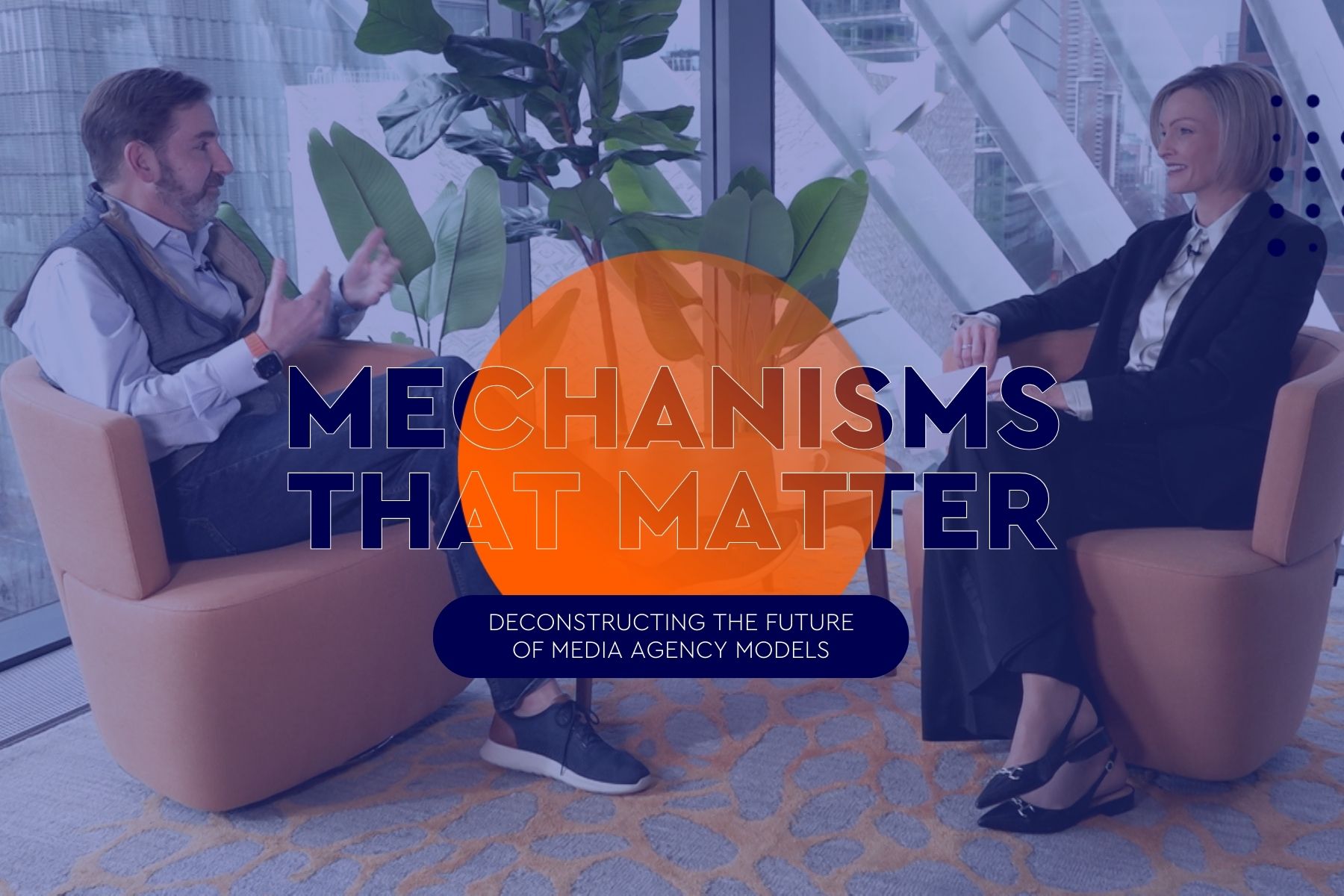Mechanisms that Matter – Inside our partnership with Google
Being a successful agency partner to a tech giant requires extraordinary levels of expertise and ambition.
In the newest episode of our series exploring global agency models, Richard Hartell (RH), WPP’s Global Client Lead for Google and CEO at Media Futures Group, tells Anna Hickey (AH) why product smarts, connectivity and an appetite to bring in the best network talent are must-haves in a winning set-up.
AH: The unique agency collective that you run for Google today has its roots in an amazing 17-year partnership with Essence. How do you think being an agency partner to a tech giant for nearly two decades has shaped the attitude and the make-up of the current team?
RH: We were very early partners with what was a relatively small company back then and have been that partner for 17 years. The people that started Essence were really steeped in technology because they had to be – Google wouldn't hire them if they didn't know technology themselves. So right from the very start, the founders of Essence built the relationship on building products for Google. So, we've actually built technology over the past 17 years that sat alongside Google's own technology, and made it even better in terms of marketing their own products and services.
AH: You’re constantly developing technology and products to make client operations more efficient and also, of course, more effective. Many of our clients are asking how we’re going to use AI to make a measurable year-on-year improvement in operations and outputs, whether that's automating processes or reducing costs. What would you tell them are the biggest benefits and watch-outs?
RH: AI has been a big part of our relationship with Google for quite a long time, as you can imagine, because they’re an AI company, right? And so in that time we've used AI to make their media more efficient and more effective. We built products that brought together media and creative very early on.
For example, years ago we created a thing called the Magic Banner, which populated banners with exactly the right content, for the right moment, with the right audience. We've created contextual advertising solutions that have actually brought in content which matches the contextual sites that they sat upon.And now we're going even further, developing new products which obviously I can't talk about, but with Google in the generative AI space that start to connect media and creative, commerce and content. So you get much less-siloed marketing disciplines, all connected through generative AI.
AH: Agency models for clients are in some ways going full circle. They started out as separate creative and media institutions, now it feels like they're coming back together as clients are looking for more unified ways of working. And often the way that they're coming together is through a common data and tech spine. Working on a business that runs hundreds of campaigns in dozens of markets every day, what's your view on the pros and cons of that new level of integration?
RH: I've always believed in it. I started off in a full service agency. I'm not old enough to have worked in a place where the creative director sat in the same office as the media director! But I knew people who did. So I've always believed in a full service, connected model.
I think it's even more urgent now that we connect media and creative more closely together. If you separate those two things today, I really don't think you get the same performance. I work very closely with the chief creative officer of Ogilvy on our business, and I really believe in that connectivity across the two disciplines, and I think AI will make it, as I said, even more urgent.
AH: The level of integration you describe in your team and the fact that you're building products with the client must make for an unusually close working relationship. I think one of the things clients value – even if they don't always acknowledge it – is the way that agencies challenge them. How do you maintain the distance but also have that right to challenge?
RH: It's a great question, because it is a real balance for any client, I think. As I said, with Google the people on the business have to have deep technical knowledge of Google. So they've got to be in the business and 100% on it for a long time. But there is a danger that people get caught in a bubble; what we do is we bring the outside in all the time.
We have a thought leadership programme called Outside in. We bring in other WPP leaders to talk about their clients and how they work. That's the benefit of being part of WPP, you've got a huge range of clients to learn from. And Google are very, very good at wanting to learn from other clients and what they're doing. So we bring that disruptive thinking, alternative ways of doing things. For any client, that's of value.
AH: So Richard, when you are building a network model solution for a client the scale of Google, obviously most of the resources in your team are going to be dedicated to that client. And often that's what the client needs, that specialism and that focus. How do you do that but also maintain the connectivity back to WPP and the wider capabilities that are available across the group?
RH: RH: I mean, the honest answer to that is that you're greedy with your demands, right? I bring in all of our best people from across WPP. Whether that's in technology, whether that's in creativity, whether that's in commerce, I bring in the people who will lead our capabilities in that space. You have the ability to bring in your partners wherever you need them. And Google really value that. So we have top-to-tops with Google leadership and bring in capability leaders to talk about best practice in those spaces all the time.
published on
05 April 2024
Category
More in Communications

How to build your brand in-game
A new research report from WPP and SuperAwesome

Mechanisms that Matter – Inside our partnership with Audible
How do you take a huge client like Audible from 22 agencies to one thriving networked team?

Healthcare communications – diverse, dynamic & different
Communicating about health and healthcare in APAC requires a nuanced and balanced approach

